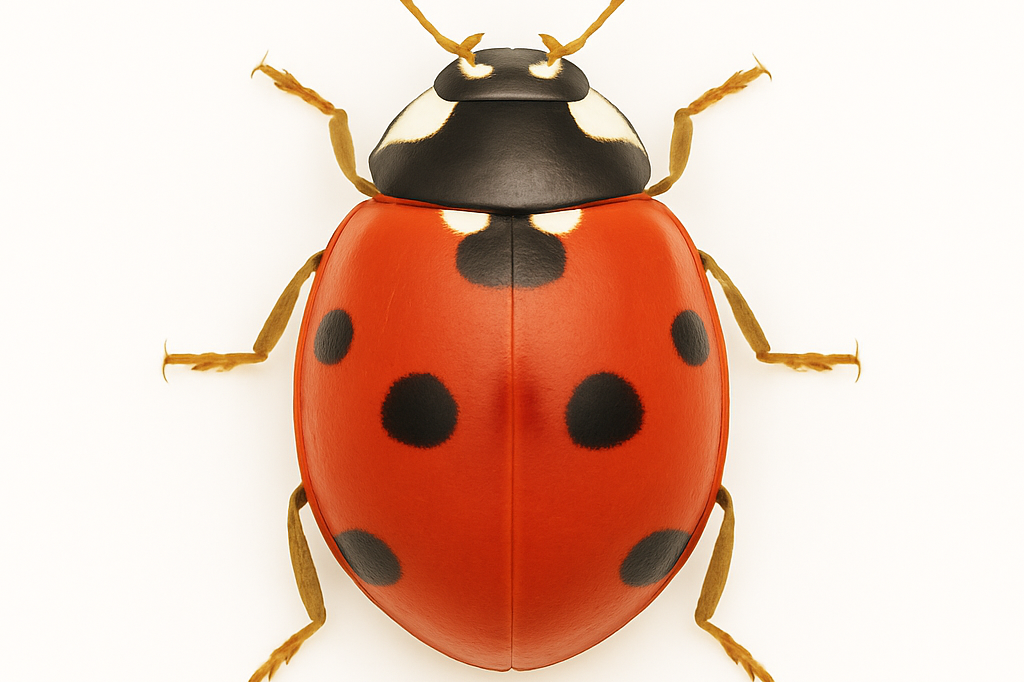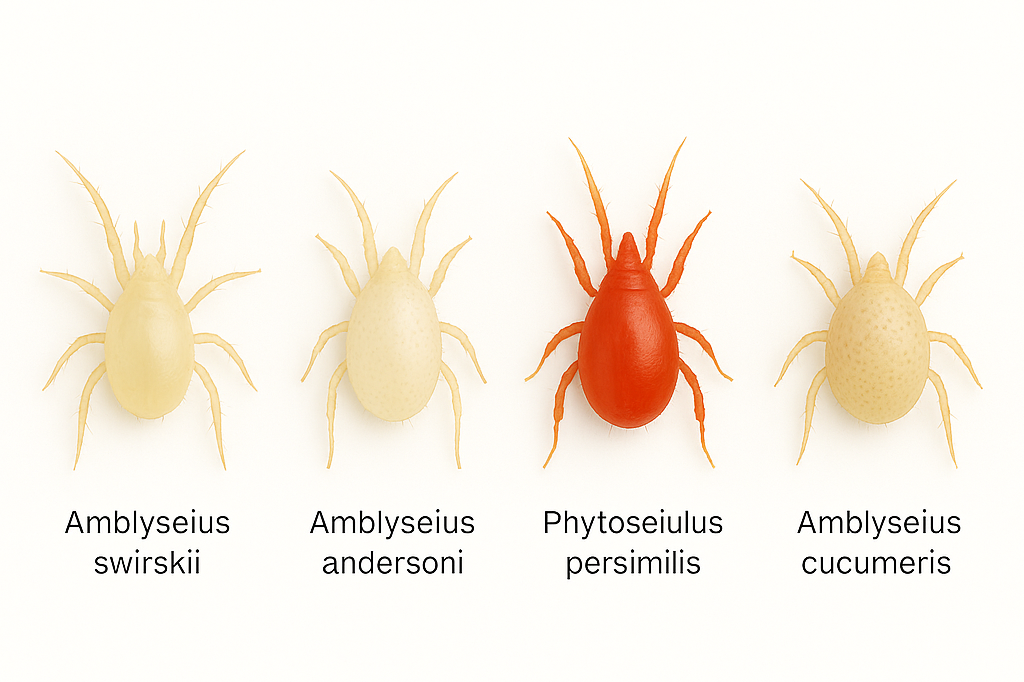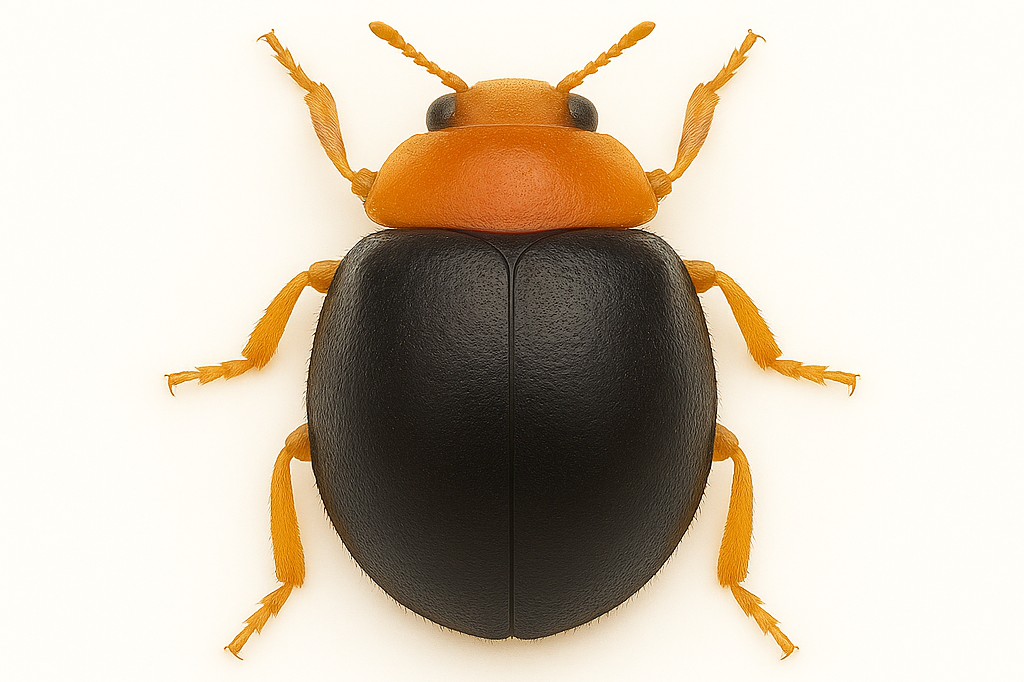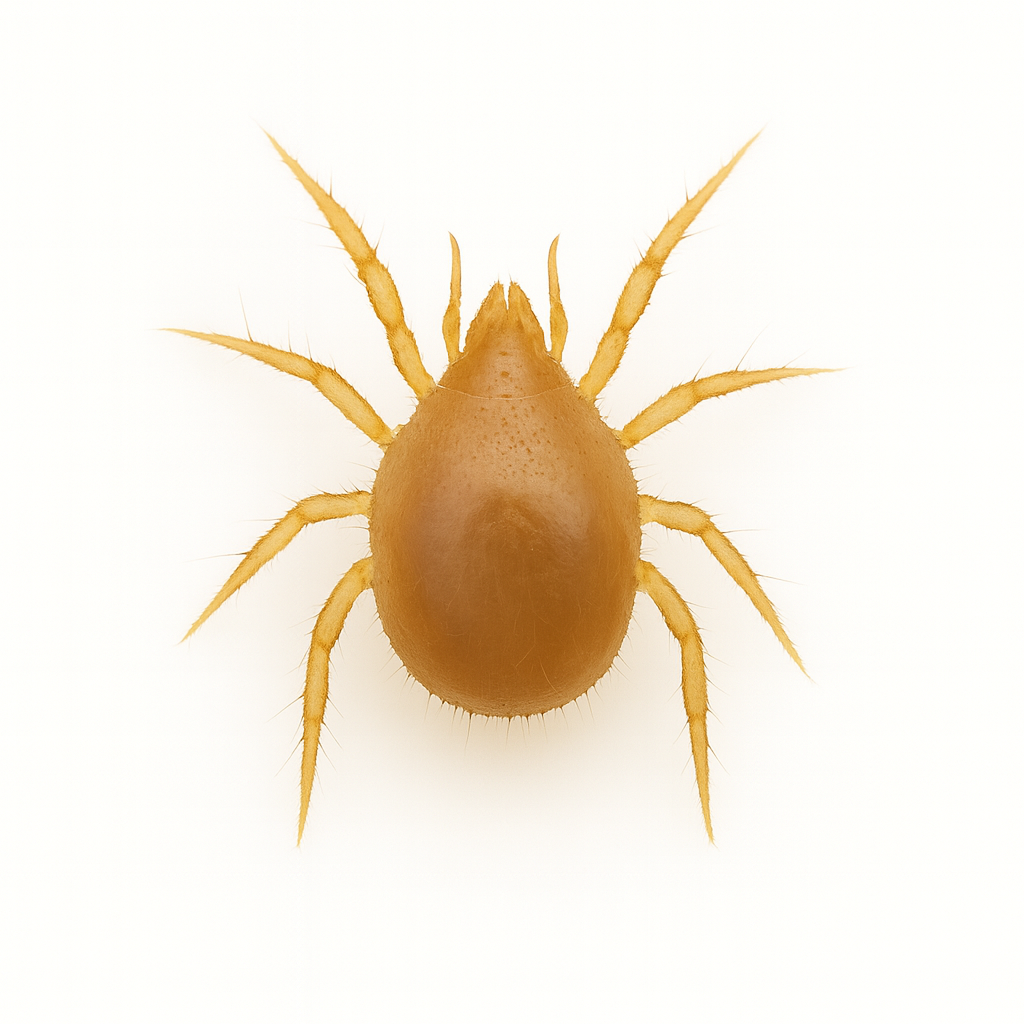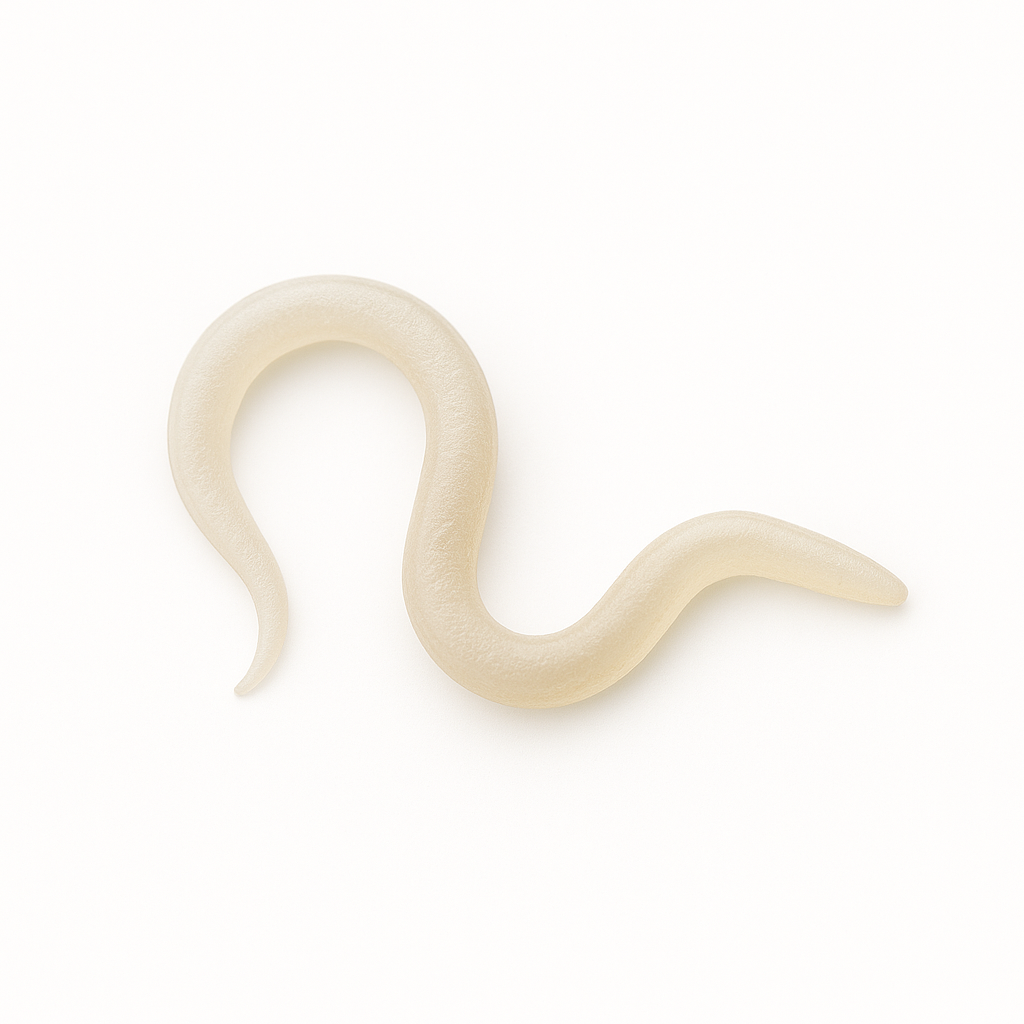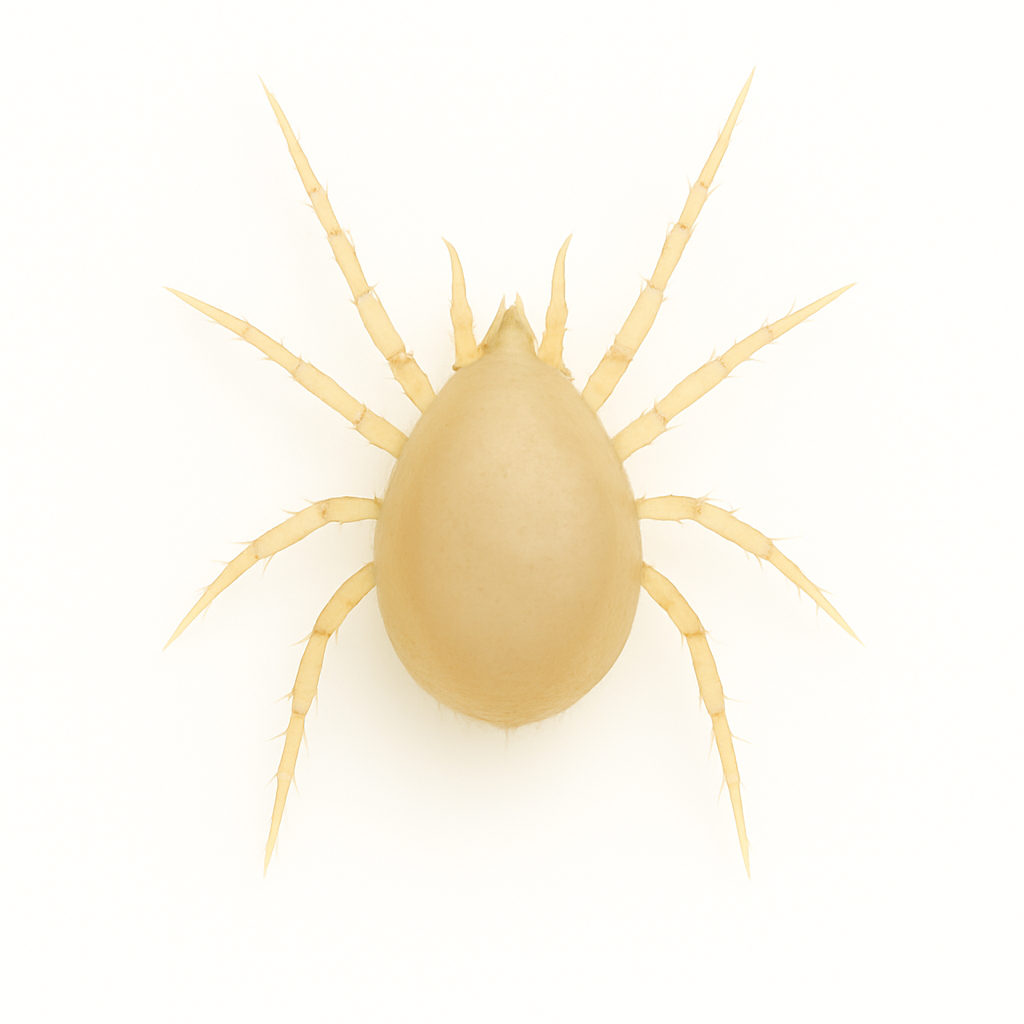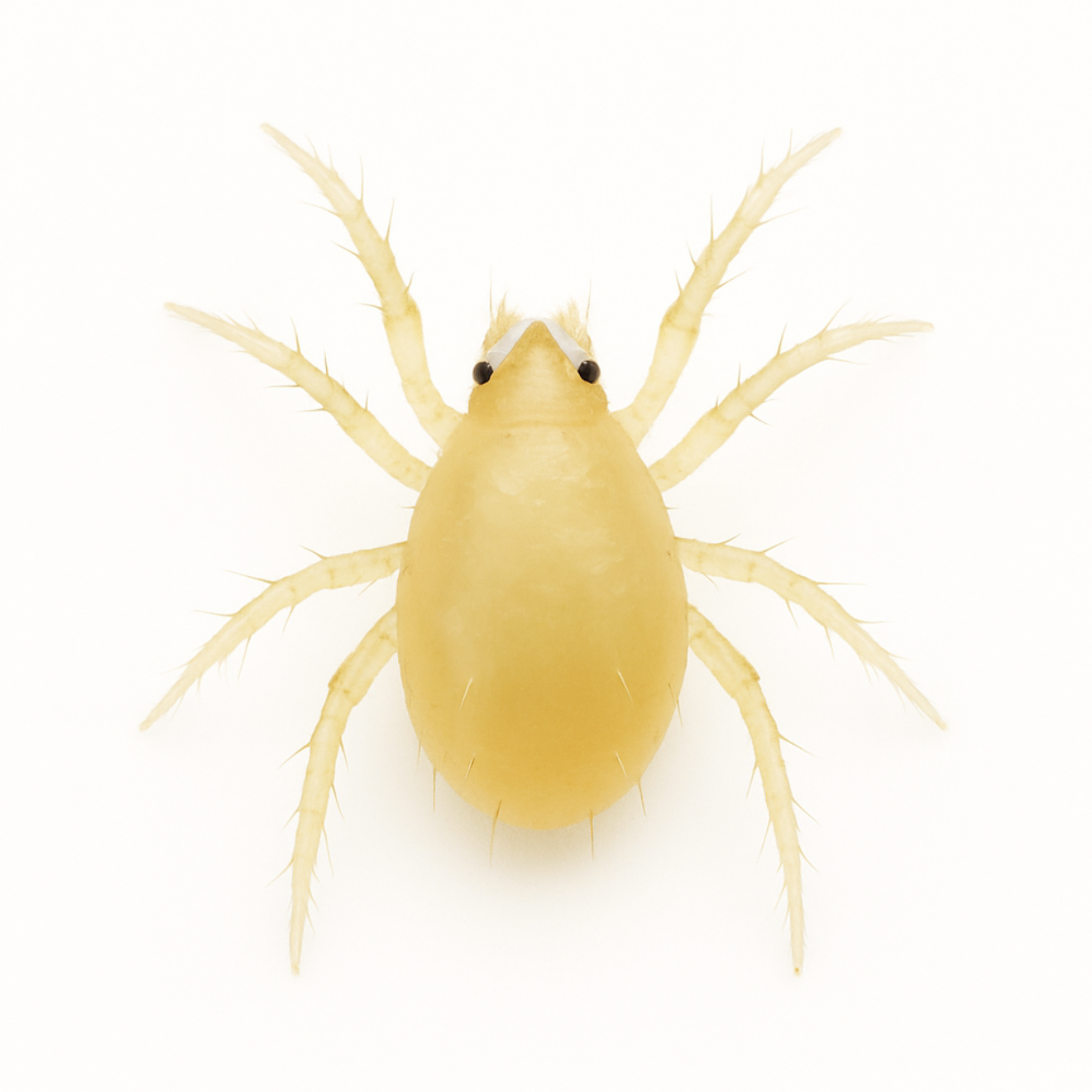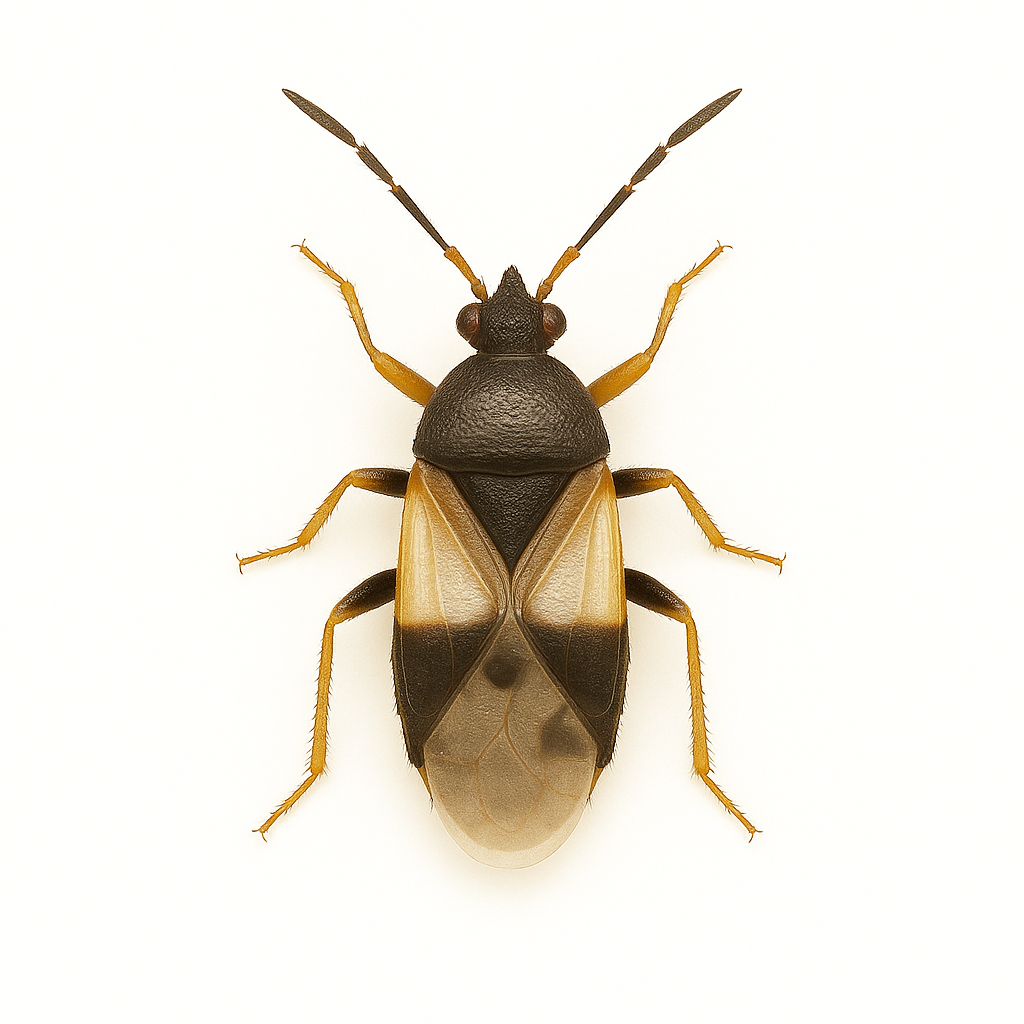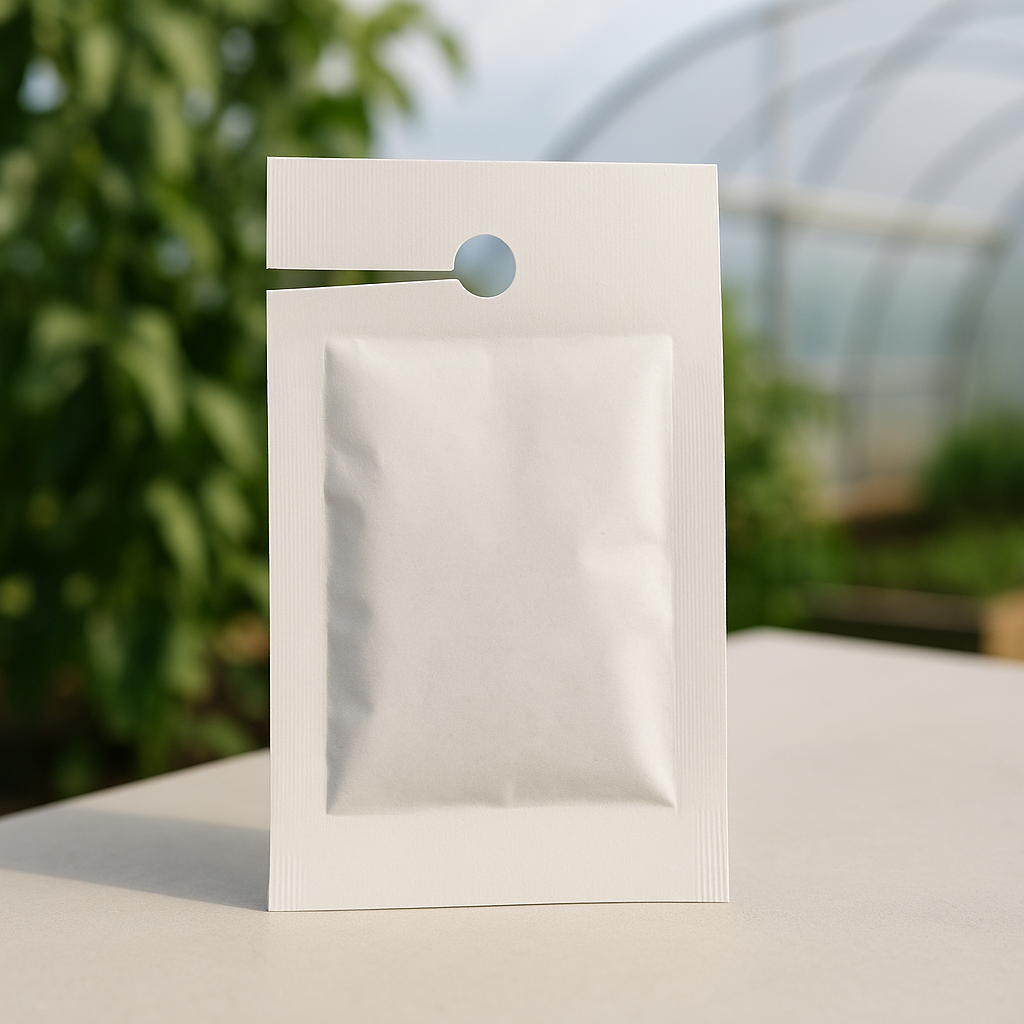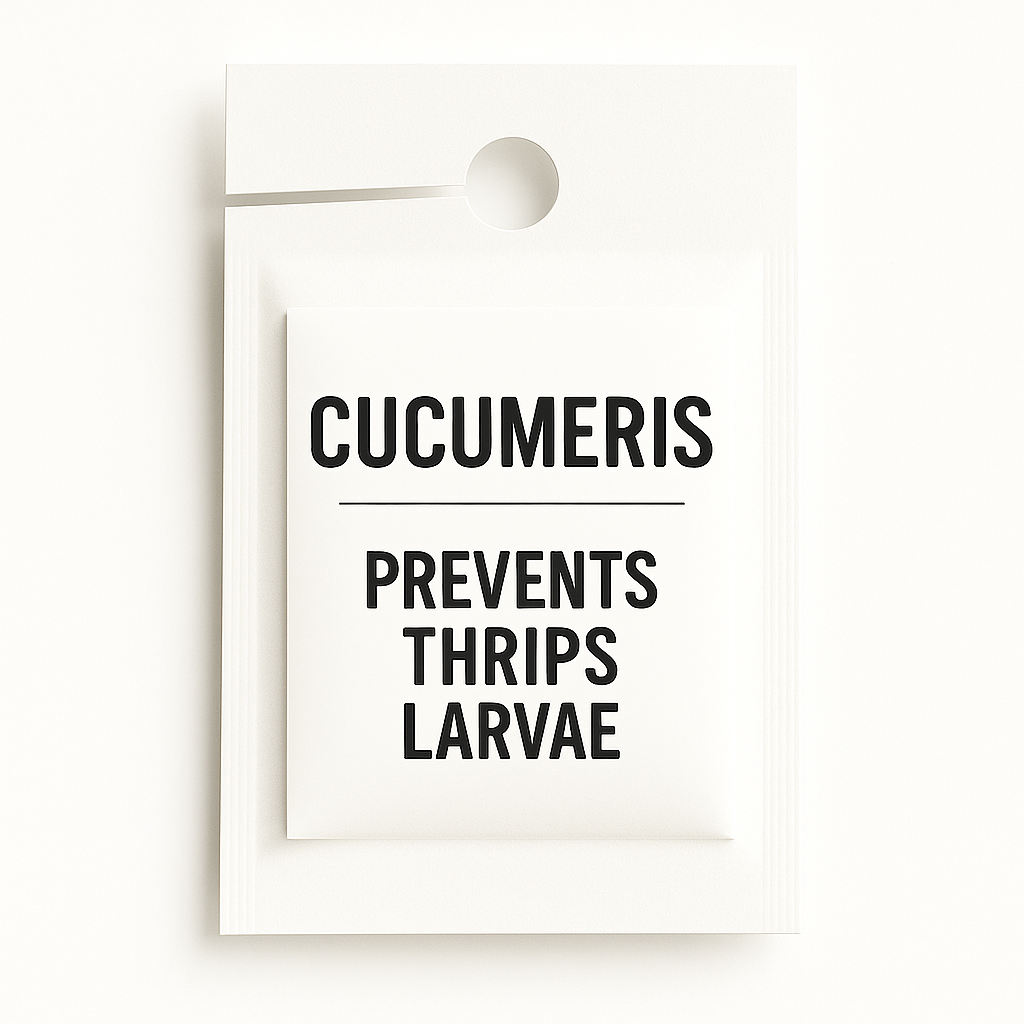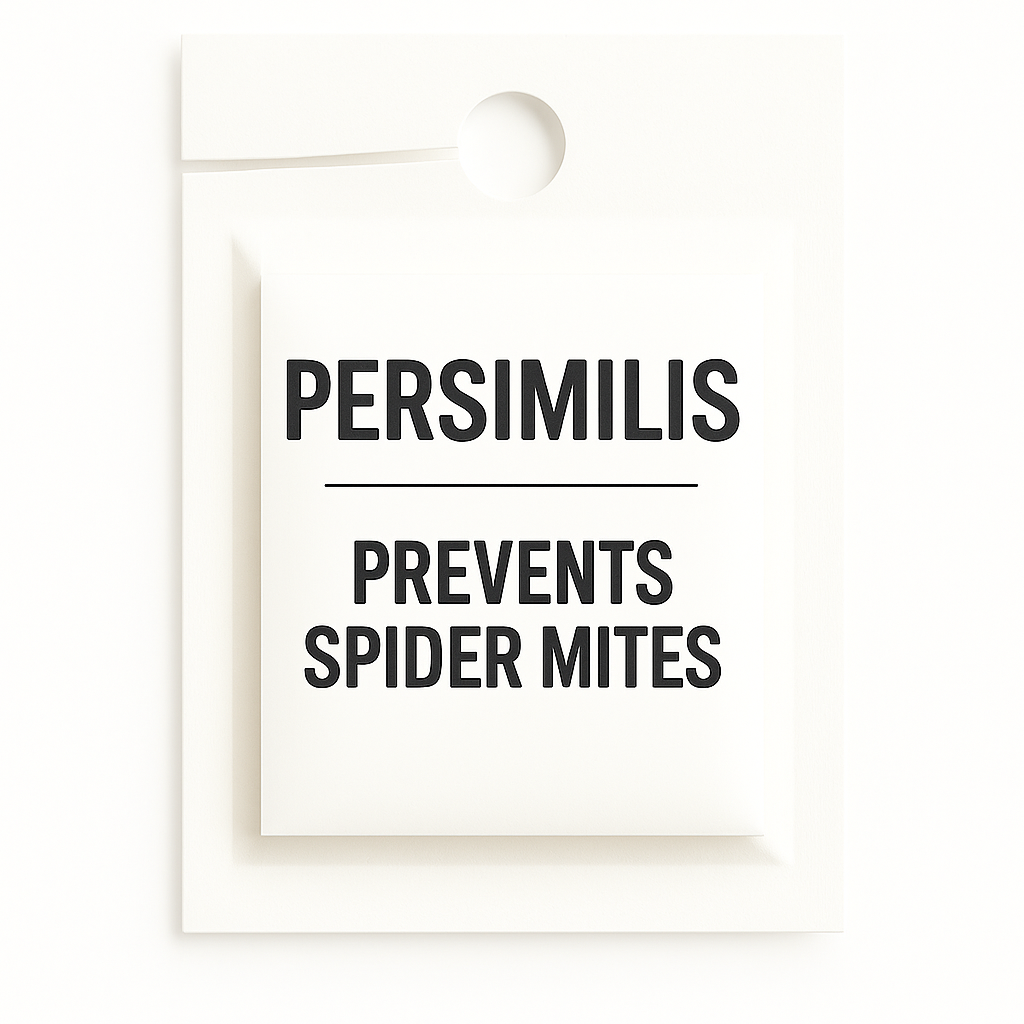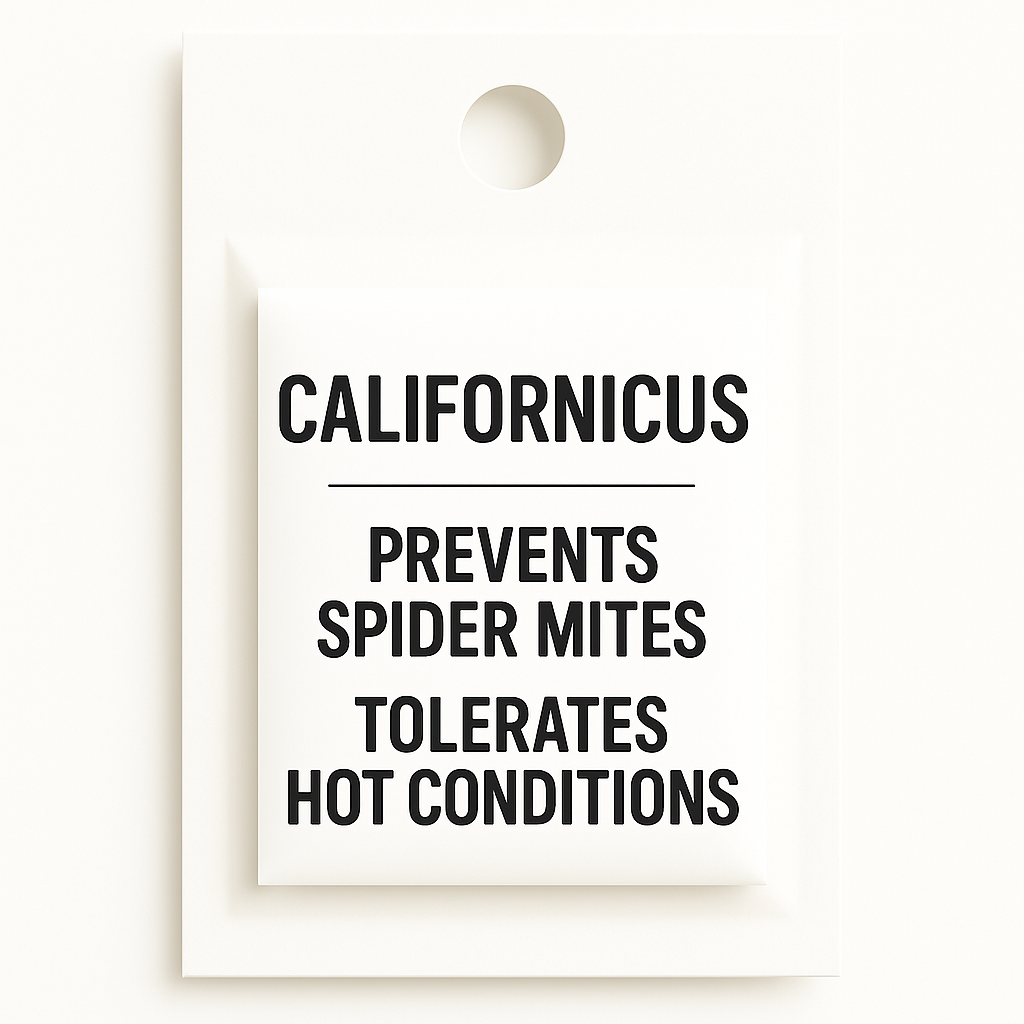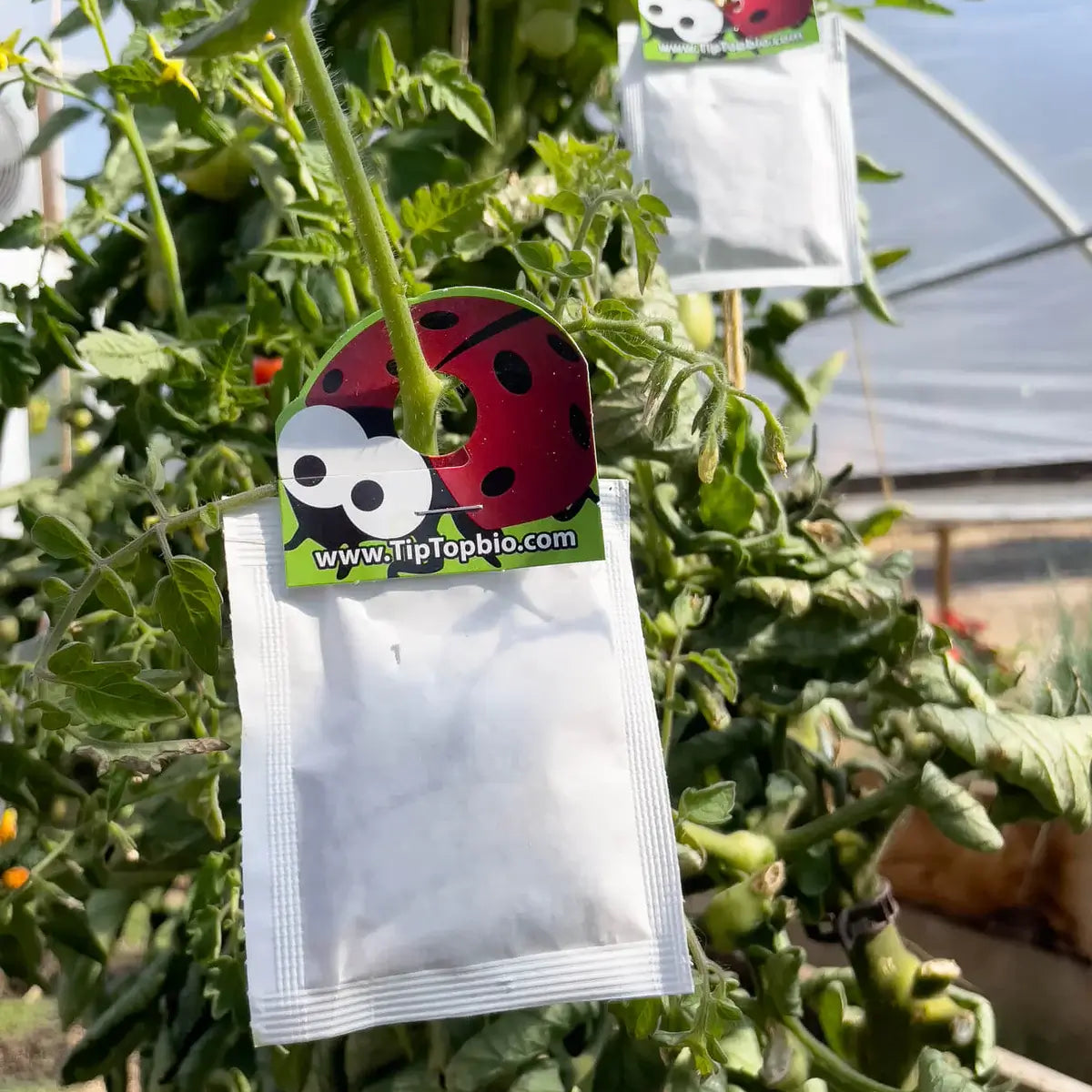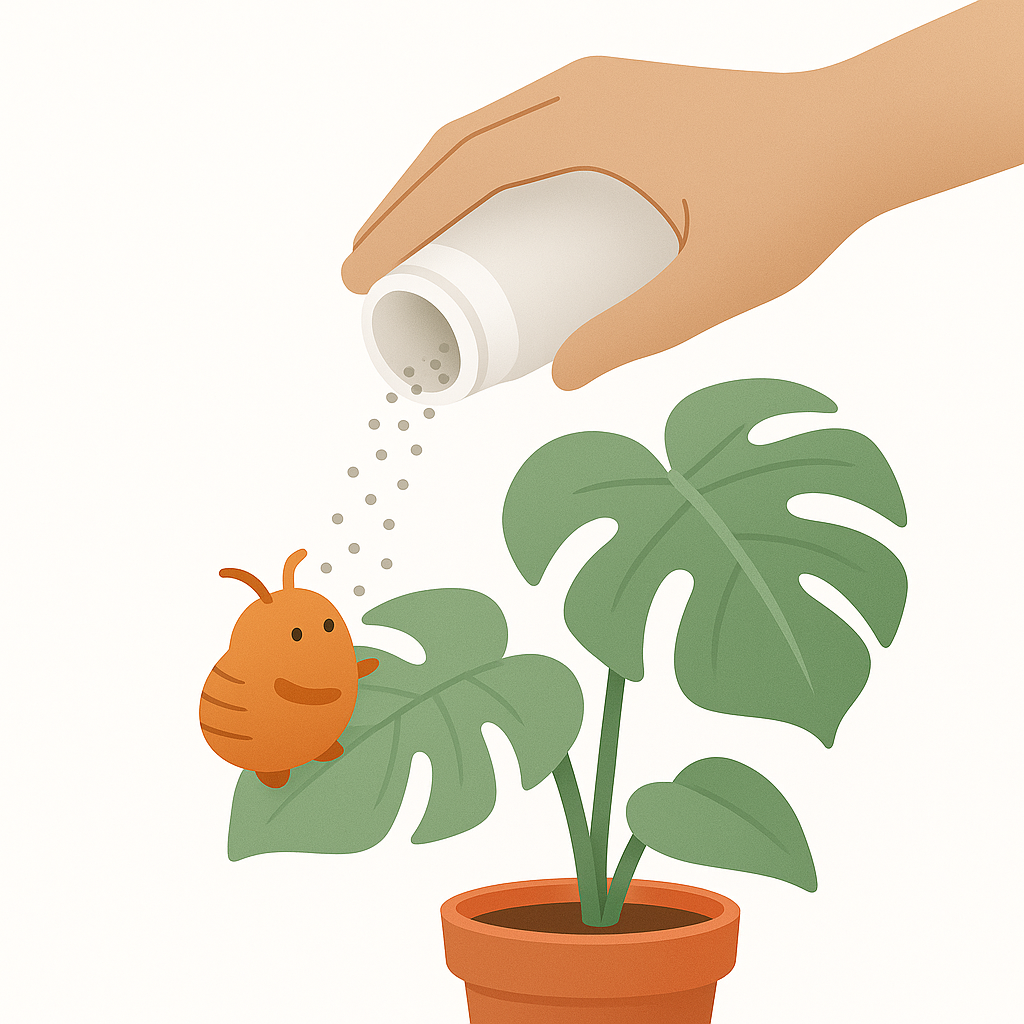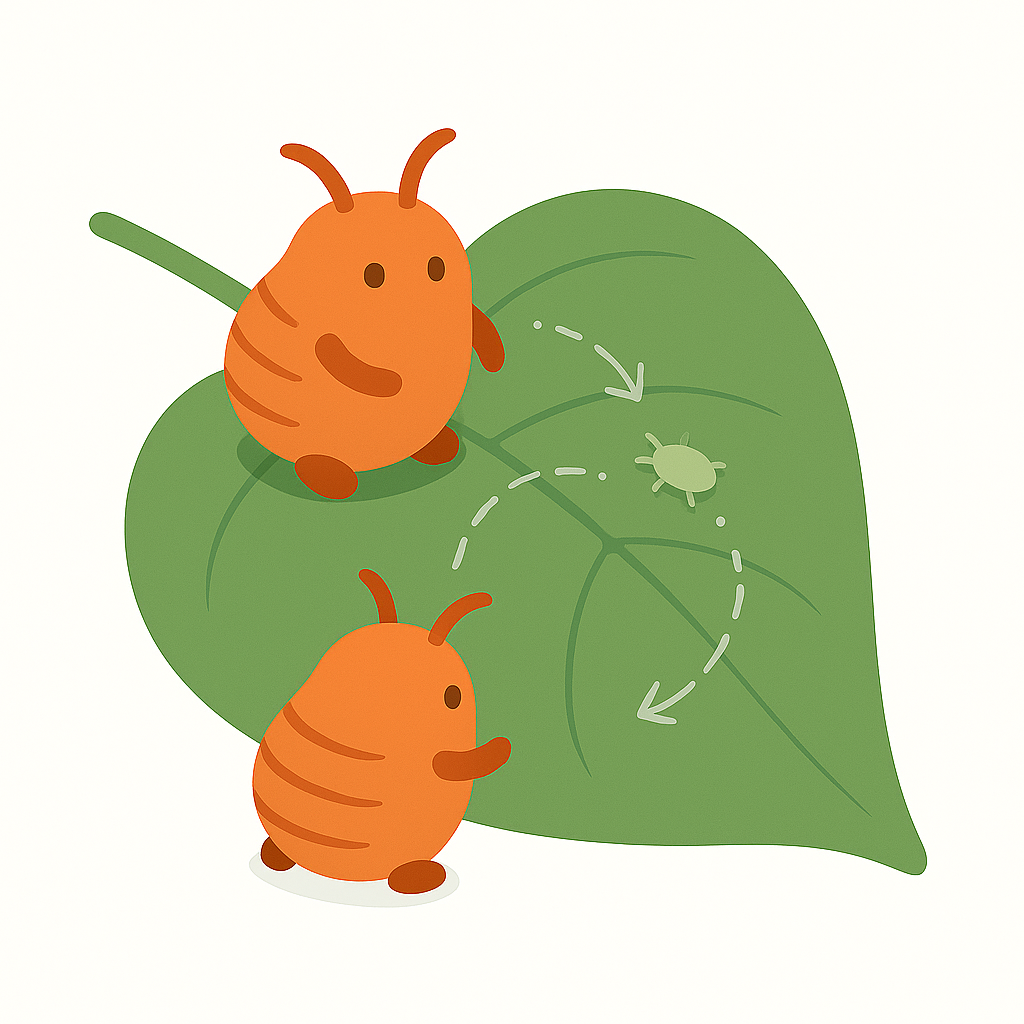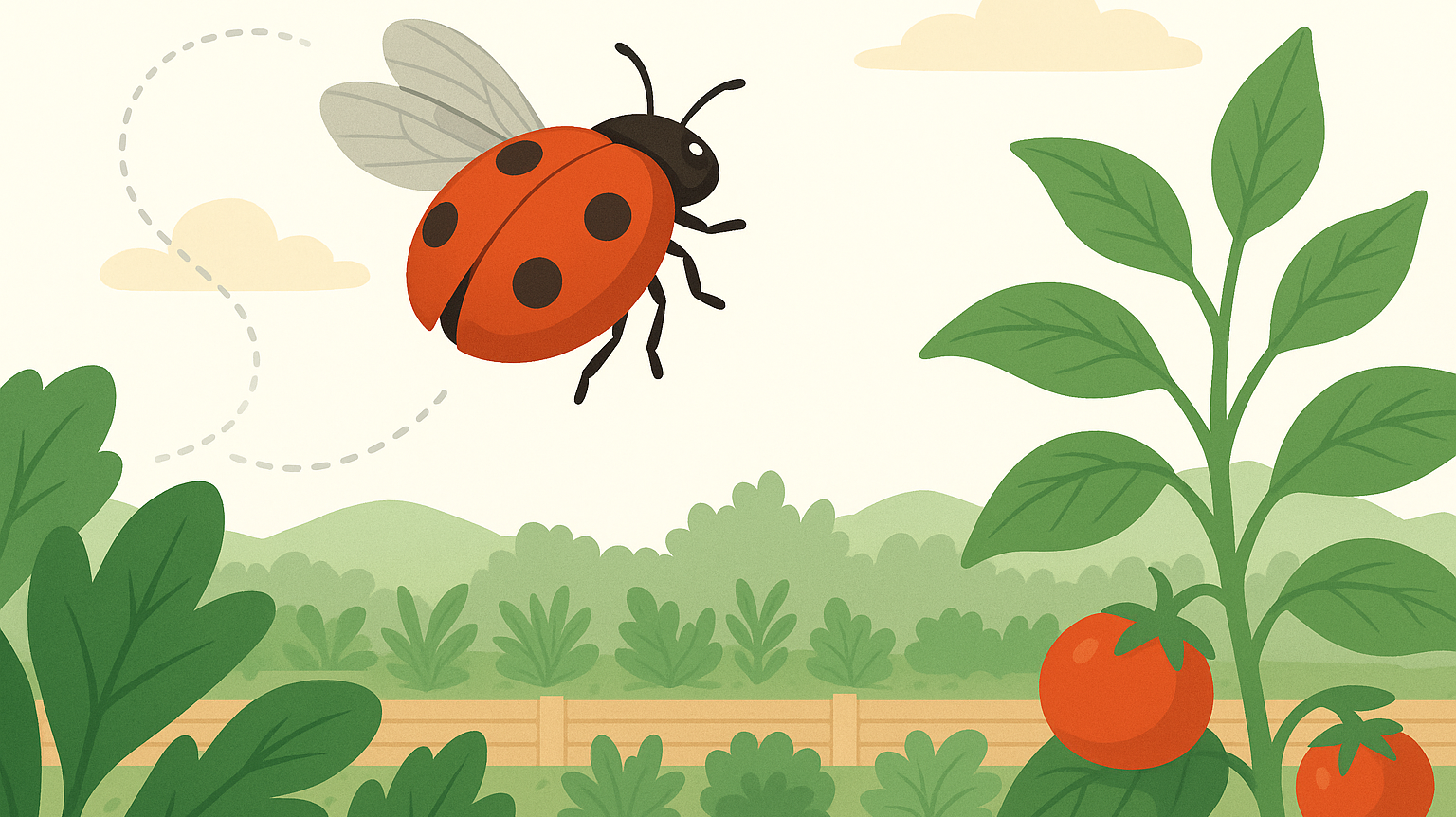The Predatory Mite Advantage
We get it — inviting mites into your grow feels strange at first. But these tiny hunters are nature’s way of keeping pests in check. From thrips and spider mites to fungus gnats, predatory mites offer real biological pest control without the chemical baggage.
90% of growers report their pest problems gone in 7 days.
(and if it's not, there's good reason)
Most Popular Predator Solutions
Ladybugs
A fast-moving generalist that swarms aphids, whitefly, and other soft-bodied pests. Best for broad coverage and quick knockdowns in greenhouses or outdoor environments.
Special Blend
A balanced mix of four mite species — Swirskii, Andersoni, Persimilis, and Cucumeris. Together, they cover thrips, whitefly, and spider mites at multiple life stages, delivering both treatment and prevention.
Live Delivery Guaranteed
Let us know within 24 hours of delivery if your shipment is dead and we'll replace it.
Introduce Your Predatory Mites
Predatory mite bottles arrive alive and active, filled with thousands of adults that are already capable of feeding. Each bottle is designed for direct application — you simply tilt and distribute them across your plants. From that moment, the mites start dispersing on their own, climbing from the soil line to stems and leaves. There’s no mixing, no prep, and no chemicals involved. What you’re releasing isn’t a treatment that washes over the plant, but a workforce of living hunters that immediately begin patrolling their new environment.
Search & Suppress Plant Pests
Once released, the mites spread out across the plant in search of food. They follow natural chemical cues that pests leave behind, navigating into the undersides of leaves, along veins, and into crevices where spider mites, thrips, and whitefly often hide. Feeding begins right away, but pest populations don’t vanish overnight — suppression is a process that unfolds over days as the predators continue to hunt. The strength of bottles lies in speed: because they contain only adults, you’re releasing mites that are already mobile and hungry, giving you an immediate workforce where you need it most.
Balance Is Restored
Over the next several days, as predators feed and reproduce, pest numbers steadily collapse. With the outbreak under control, plants can redirect their energy into healthy growth rather than defense. Unlike chemicals, there’s no residue left behind, no plant stress, and no risk of rebound caused by resistant pests. Predator numbers naturally taper off once their food source is reduced, leaving the system balanced without the need for cleanup or repeated chemical cycles. Bottles provide that critical fast-start suppression, buying time and restoring stability in a way that supports long-term plant health.
Latest From Mite Matters
The Hidden Weather That Shapes Plant and Predator Life
Invisible weather shapes every growing space. Warm air pools under lights, cool air settles near the floor, and in between, tiny predators decide where they’ll thrive. Learn how microclimates influence the balance between plants, pests, and the mites that keep them in check.
If Ladybugs Are Just Going to Fly Away, Why Use Them?
Most ladybugs don’t fly off out of spite — they leave when the environment isn’t right. Learn how temperature, humidity, and shelter affect whether they settle or scatter, and how to create the ideal setup that keeps them working where you need them most.
Where Did My Predatory Mites Go?
Released predatory mites but can’t see them anymore? Don’t panic. Their invisibility is exactly what makes them effective. Learn why they vanish, how they hunt pests out of sight, and why reapplying keeps your plants protected.
Let customers speak for us
What customers think about the store
Customers highly appreciate this plant seller for its superior shipping practices that ensure plants arrive in excellent condition. Reviews highlight efficient communication, prompt delivery, and thoughtful packaging that protects the plants during transit. Th...
AI-generated from customer reviews.
Frequently Asked Questions
General Information
What are predatory mites?
Predatory mites are microscopic, beneficial arthropods that feed on plant-damaging pests like spider mites, thrips, and fungus gnat larvae. Unlike harmful mites, predatory mites do not damage plants. Instead, they serve as a natural form of pest control, reducing infestations without the use of chemical pesticides. These mites are widely used in horticulture, greenhouses, and home plant care to maintain pest-free environments while promoting plant health.
How do predatory mites work?
Predatory mites locate their prey using movement, heat, and chemical signals emitted by pest populations. Once they find a pest, they pierce its body with their specialized mouthparts and consume it. Depending on the species, predatory mites may actively hunt their prey or wait for pests to pass by before attacking. Some species prefer to feed on early-stage pests, such as eggs and larvae, while others will consume all life stages of their target pests.
After reducing pest numbers, predatory mites will either move on in search of more food or their population will naturally decline. If pests reappear, a booster release of mites can help maintain control.
What types of predatory mites do you offer, and what pests do they target?
We offer a range of predatory mites and beneficial insects, each specialized in controlling different plant and soil pests. These natural predators provide an effective, pesticide-free solution for managing infestations in greenhouses, grow tents, and home gardens.
Predatory Mites
These microscopic mites are highly effective against specific pests:
- Amblyseius cucumeris – Controls thrips larvae and some spider mites. Best used as a preventative measure in humid environments.
- Neoseiulus californicus – Feeds on spider mites, broad mites, and cyclamen mites. Works well for prevention and light infestations and can tolerate drier conditions than other predatory mites.
- Phytoseiulus persimilis – A specialized predator that exclusively feeds on spider mites, particularly two-spotted spider mites. Works best for fast knockdowns of infestations in humid conditions.
- Amblyseius swirskii – Targets thrips, whiteflies, broad mites, and some spider mites. Ideal for prevention and long-term control, especially in warm, humid environments.
- Stratiolaelaps scimitus (formerly Hypoaspis miles) – A soil-dwelling mite that feeds on fungus gnat larvae, root aphids, and other soil pests. Also used to control snake mites in reptile enclosures. Best for breaking pest life cycles before they emerge.
Beneficial Insects & Nematodes
In addition to predatory mites, we also offer other biological controls for both foliage and soil pests:
- Ladybugs (Hippodamia convergens) – Feeds on aphids, spider mites, mealybugs, whiteflies, and scale insects. Each adult ladybug can eat up to 50 aphids per day. Best used in controlled environments to prevent dispersal.
- Green lacewing larvae (Chrysoperla rufilabris) – Sometimes called "aphid lions," these larvae consume aphids, mealybugs, thrips, whiteflies, spider mites, and small caterpillars. Ideal for early-stage infestations before they mature into non-predatory adults.
- Nematodes (Steinernema feltiae) – Microscopic, soil-dwelling worms that hunt down and kill fungus gnat larvae, root aphids, and other soil-borne pests by infecting them with bacteria.
- Praying mantis (Tenodera sinensis) – Large, generalist predators that consume a wide range of pests, including aphids, caterpillars, beetles, crickets, grasshoppers, flies, and wasps. Best for outdoor use in gardens.
Each predator plays a specific role in pest control. If you're unsure which one is best for your setup, feel free to reach out for recommendations.
Application & Storage
How do I apply predatory mites?
The application method depends on the type of packaging you receive:
- Bottled mites: These mites come mixed with a carrier medium such as bran or vermiculite. Gently rotate the bottle to evenly distribute the mites before application. Then, sprinkle the mixture onto plant leaves, stems, or the soil (depending on the pest you are targeting).
- Sachets: These small paper packets contain slow-release mites that gradually emerge over time. Simply hang them on plant stems, branches, or trellises. The mites will disperse from the sachet and begin searching for prey.
For optimal results:
- Apply mites early in the morning or late in the evening to avoid excessive heat or light exposure.
- Ensure that plants are slightly moist before releasing mites, as humidity can help with their survival.
- Avoid applying mites right after using chemical pesticides, as pesticide residues can harm them.
How long do predatory mites remain active after release?
Predatory mites remain active as long as they have a food source. If pests are present, the mites will continue hunting and feeding. Once the pest population is reduced, the mites will naturally decline due to a lack of food. Some mites may disperse in search of more prey, while others may survive by feeding on pollen or other small organisms.
For long-term pest control, it is common to reintroduce predatory mites every 2–4 weeks, especially in environments where pest pressure is high.
Can I store predatory mites before applying them?
Predatory mites should be released as soon as possible after arrival for the best results. However, if immediate application is not possible, short-term storage is an option:
- Temperature: Store mites at 50–60°F (10–15°C) in a cool, dark place such as a refrigerator. Do not freeze them.
- Storage Duration: Most species can survive in storage for 1–3 days, but this varies by species. Phytoseiulus persimilis, for example, has a shorter storage tolerance and should be released immediately.
- Handling: Keep mites in their original container and do not expose them to direct sunlight or extreme temperatures before release.
Effectiveness & Results
How long does it take to see results?
The speed at which predatory mites control pests depends on several factors, including pest population size, environmental conditions, and the species of mites used.
- Preventative releases: If mites are introduced before pests become a problem, they will establish populations and prevent outbreaks. This is a slow but highly effective strategy.
- Active infestations: When treating an existing pest problem, some mites (such as Phytoseiulus persimilis) work quickly, visibly reducing spider mite numbers within 2–5 days. Other species may take 1–2 weeks to provide full control.
Will predatory mites completely eliminate pests?
Yes, predatory mites can completely eliminate pests when used correctly and as part of an ongoing pest management strategy. Achieving full control depends on several factors, including pest pressure, environmental conditions, and the frequency of predator releases.
For best results, predatory mites should be applied proactively and monitored over time. A single release may be sufficient for light infestations, but multiple releases are often necessary for larger outbreaks. Integrating other biological controls, such as ladybugs, green lacewing larvae, or nematodes, can further enhance pest elimination.
Additionally, environmental adjustments—such as maintaining proper humidity, reducing dust buildup, and removing infested plant material—help create optimal conditions for predatory mites to thrive. With consistent application and monitoring, predatory mites can effectively eliminate pests and prevent reinfestation.
What should I do if I don’t see the mites after release?
Predatory mites are extremely small and difficult to see with the naked eye. Instead of trying to find them, monitor pest population changes over time. A decline in pest numbers is the best indicator that mites are working.
If no improvement is seen after 1–2 weeks, consider:
- Checking environmental conditions (humidity, temperature)
- Evaluating pesticide history (residual chemicals may harm mites)
- Releasing a larger quantity of mites for heavy infestations



